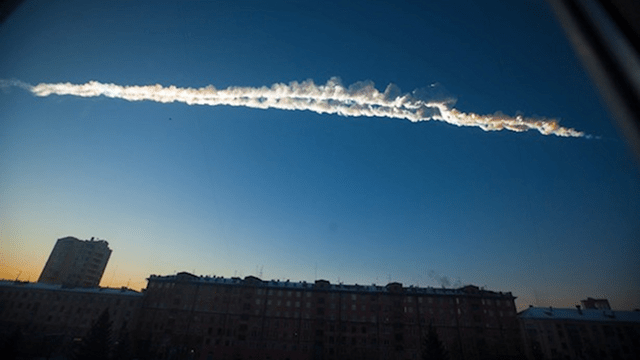Nobody expected the giant meteor that exploded over Chelyabinsk in Russia last year. According to new research, that might not change much in the coming years.
A new study of the efficacy of future early warning systems reveals that even the best of them would miss about half of all potential meteor strikes the size of the one that struck Chelyabinsk. That particular rock measured 20 meters across and exploded with the force of about 600 kilotons of TNT.
From late 2015 the ATLAS telescope array in Hawaii will be scanning the sky for Chelyabinsk-sized incoming rocks, and the European Space Agency is also considering a a big global array to double its current warning times. But, crucially, neither are able to spot meteors heading toward Earth in the daytime sky.
“The only way you can get around that problem is having a spacecraft,” explained Robert Jedicke of the University of Hawaii at Manoa to New Scientist. Problems is, there are no plans to develop such craft. There are, however, plans afoot to launch ships that can spot much larger rocks — over 100m across — hurtling towards our planet: both Sentinel and NEOCam are planning to do just that if they secure the money.
Which is a relief, because the impact of a rock that size would cause all kinds of crazy damage to the planet. For now, though, we’ll just have to deal with the fact that another Chelyabinsk stands a 50-50 chance of going unnoticed until it’s too late. Oh well. [arXiv via New Scientist]
